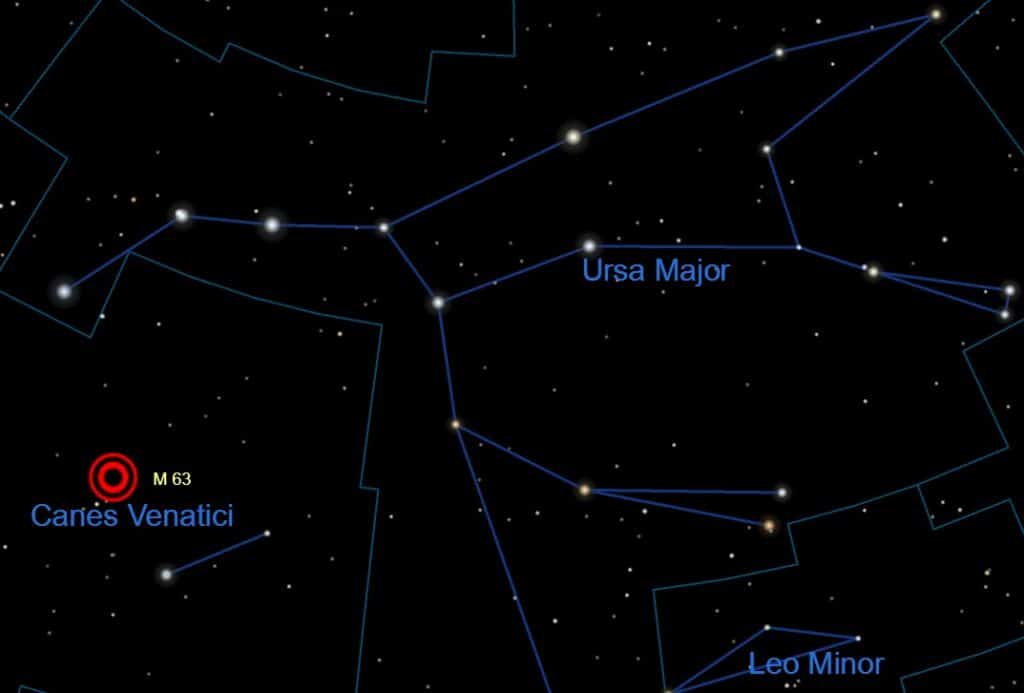You can find a flower in the night sky! Actually, it is a distant galaxy called “Sunflower” as seen in the accompanying image taken January 17, 2021. I took this picture just before dawn on a frosty morning from my observatory at the Deerlick Astronomy Village in east-central Georgia. My C-14 telescope and ZWO ASI071 camera combo gathered the photons of light for this photograph over a period of one and a half hours.
Astronomers have classified galaxies into three major categories: spiral, elliptical, and irregular. The Sunflower is a spiral galaxy, with one of the most interesting textures that I have ever seen. Its clumpy “arms” give it the appearance of a sunflower.
Astronomers call this type of unusual spiral galaxy a flocculent galaxy, one with somewhat fluffy but indistinct spiral arms. The Irish astronomer William Parsons, or the 3rd Earl of Rosse, was the first to take note of these patchy spiral arms in the middle of the 19th century.
Prior to Parsons’s observation of the galaxy, it was cataloged as M63 in astronomer Charles Messier’s 1779 logbook of deep sky objects. Today, astronomers have determined that Sunflower’s 400 billion suns (!) are more than 25 million light years away from Earth.

The galaxy resides within the indistinct constellation of the Hunting Dogs, or Canes Venatici. On the accompanying star map, you can see the galaxy marked as M63, which is not far from the Big Dipper’s handle found in the constellation of Ursa Major, or the Big Bear. Novice stargazers can spot it with a small telescope or even a pair of binoculars on a clear night under very dark skies.

Comments are closed.